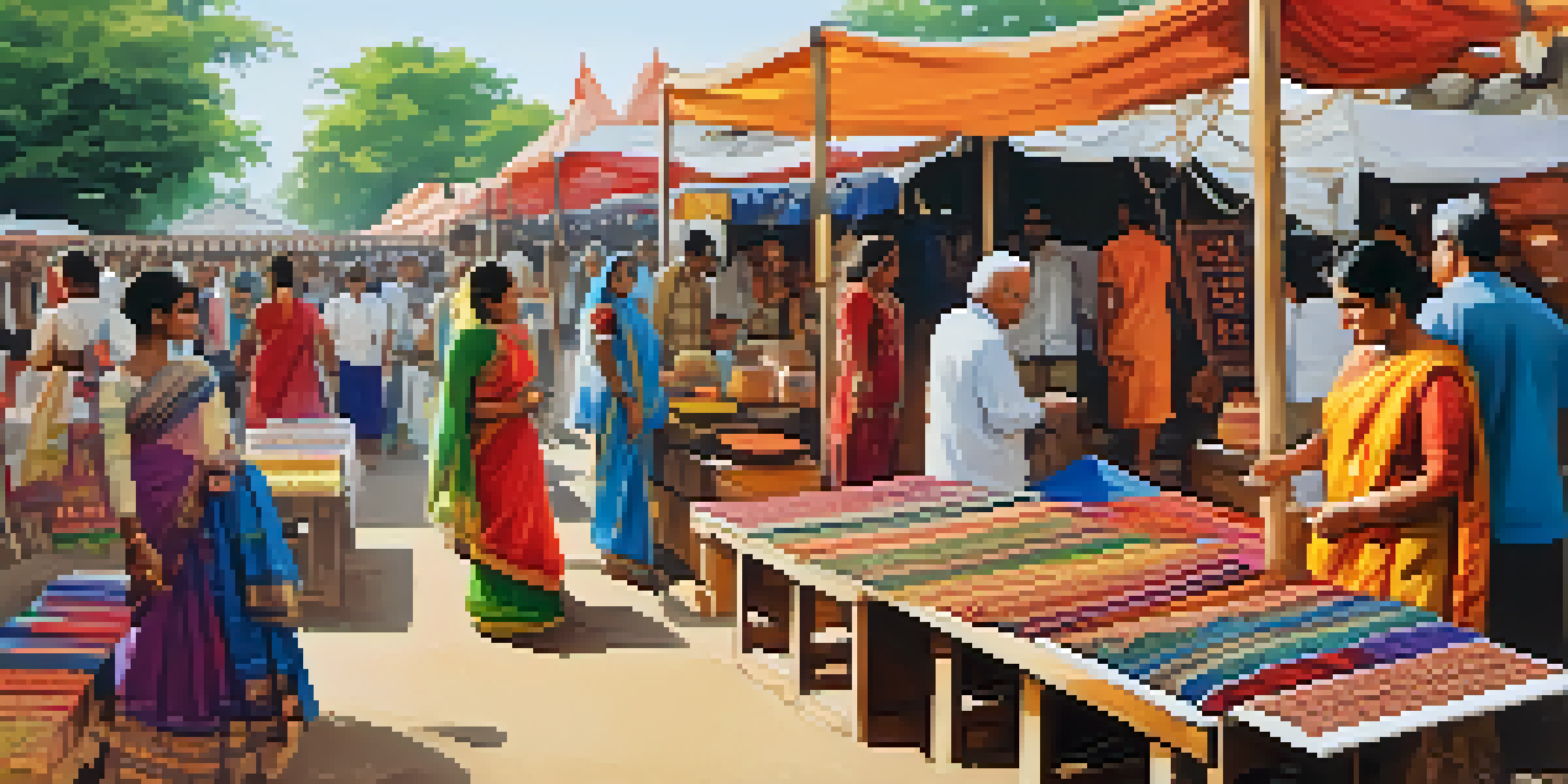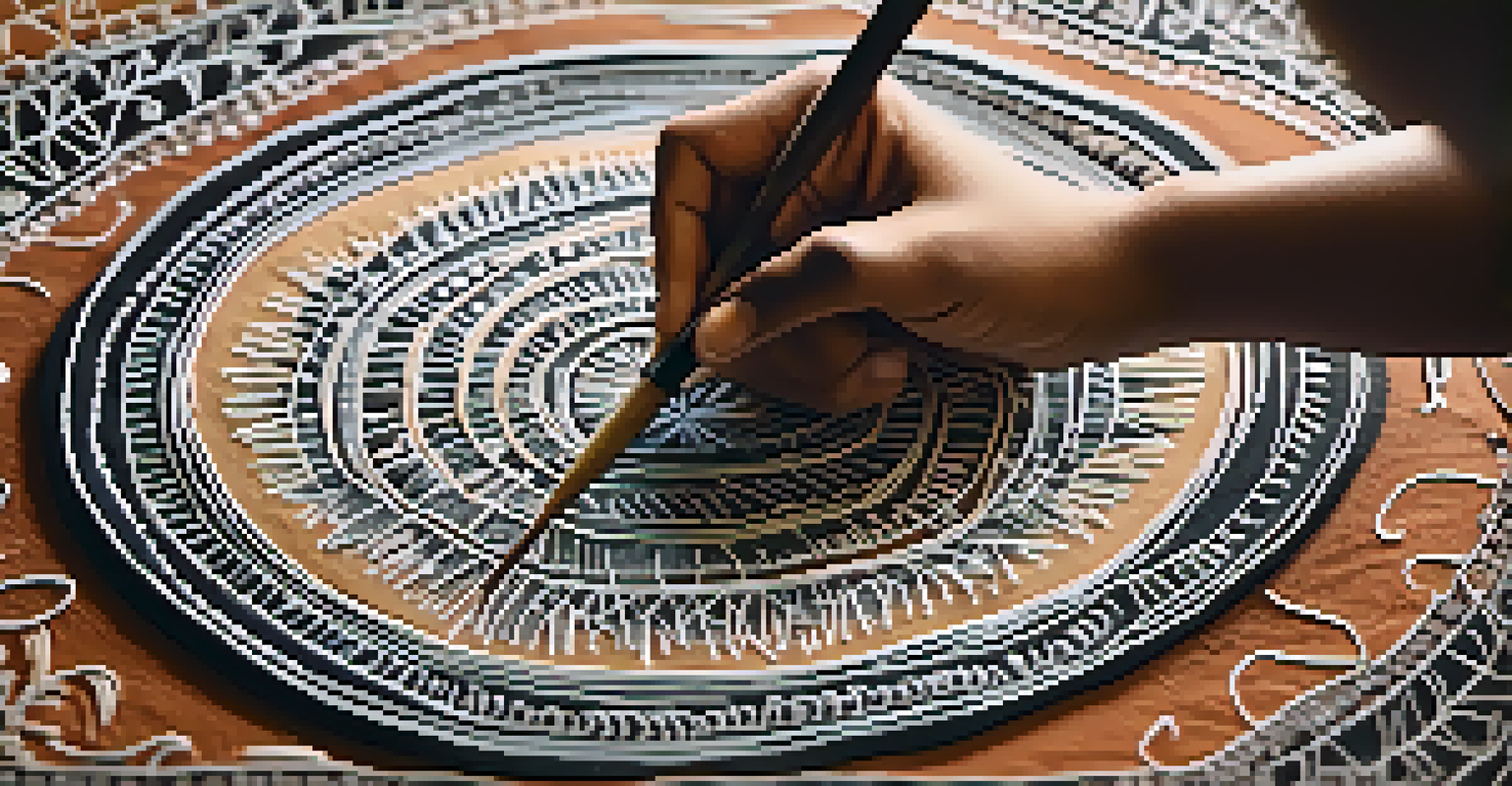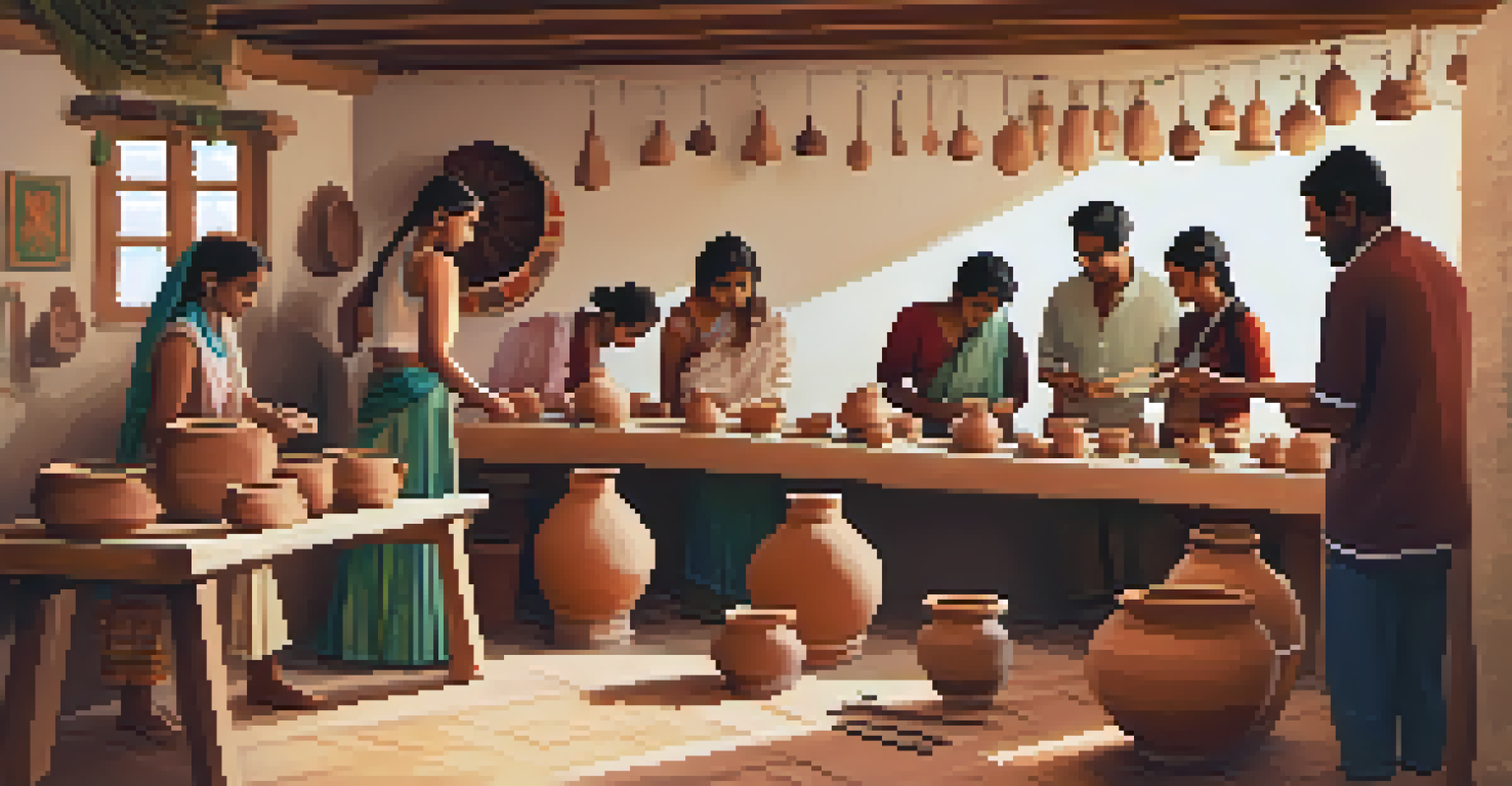Celebrating Indian Folk Art at Local Craft Fairs

The Rich Tapestry of Indian Folk Art
Indian folk art is a vibrant expression of the country's diverse cultures and traditions. Each region boasts its own unique styles, from the intricate Warli paintings of Maharashtra to the colorful Madhubani art of Bihar. These art forms often tell stories, conveying the values and beliefs of the communities that create them.
Art enables us to find ourselves and lose ourselves at the same time.
The beauty of folk art lies in its accessibility; it is not just confined to galleries but flourishes in everyday life. You can find it in homes, local shops, and, of course, craft fairs, where artists showcase their creativity. This accessibility invites everyone to appreciate and engage with the art on a personal level.
At local craft fairs, the atmosphere buzzes with creativity and cultural pride. Visitors can witness live demonstrations, interact with artists, and gain insights into the techniques and materials used. This immersive experience is a reminder of the importance of preserving these traditional art forms for future generations.
Local Craft Fairs: A Platform for Artists
Local craft fairs serve as an essential platform for folk artists to present their work and connect with a broader audience. These events often feature stalls brimming with colorful handicrafts, textiles, and paintings, each piece telling a story of its own. For many artists, craft fairs represent a significant opportunity to gain recognition and support.

Participating in craft fairs also fosters a sense of community among artists. They share techniques, ideas, and inspiration, creating a vibrant network of creativity. This collaboration not only enhances their skills but also enriches the folk art scene as a whole.
Celebrating Diverse Folk Art
Indian folk art showcases the rich cultural diversity of the country, with unique styles from different regions that tell stories of their communities.
Moreover, craft fairs play a crucial role in promoting sustainable practices. Many artisans use locally sourced materials and traditional methods, ensuring that their work not only reflects their heritage but also supports their communities economically. By purchasing from these artists, attendees contribute to the preservation of these art forms.
Experiencing the Art Firsthand
Visiting a craft fair is like stepping into a living gallery, where you can see, touch, and even try your hand at creating art. Many fairs offer workshops where attendees can learn traditional techniques, such as block printing or pottery making. This hands-on experience not only deepens appreciation for the art but also ignites a spark of creativity in participants.
Every artist was first an amateur.
As you wander through the stalls, you'll often hear the stories behind each piece from the artists themselves. These narratives add layers of meaning to the artwork, making it more than just a product but a reflection of culture and heritage. Engaging with artists allows for a personal connection that enhances the experience.
Additionally, craft fairs often showcase performances, such as traditional music and dance, further immersing visitors in the cultural richness of Indian folk art. These performances highlight the interconnection between art forms, creating a festive atmosphere that celebrates creativity in all its forms.
The Role of Technology in Folk Art
In today's digital age, technology plays a significant role in promoting traditional folk art. Many artisans now use social media platforms to showcase their work, reaching out to a global audience that was previously inaccessible. This digital presence not only helps artists sell their creations but also educates people about the art forms.
Craft fairs are increasingly incorporating technology, such as virtual reality experiences or online marketplaces, to enhance the visitor experience. This fusion of tradition and technology allows for greater engagement and understanding of folk art. It also opens up new avenues for artists to explore innovative approaches to their craft.
Craft Fairs Foster Community
Local craft fairs create essential platforms for artisans to connect, share techniques, and promote their work, strengthening the folk art scene.
However, while technology can amplify the reach of folk artists, it is vital to maintain the authenticity of the art. Balancing modern methods with traditional practices ensures that the essence of Indian folk art remains intact, allowing it to thrive in contemporary settings.
Preservation of Traditional Techniques
Preserving traditional techniques is crucial for the longevity of Indian folk art. Many of these methods have been passed down through generations, reflecting the unique cultural heritage of various communities. By showcasing folk art at craft fairs, we celebrate these time-honored practices and encourage younger generations to learn and carry them forward.
Workshops and demonstrations at craft fairs are instrumental in teaching these techniques to new audiences. When visitors participate in creating their own art, they gain a deeper appreciation for the skill and effort involved. This hands-on learning fosters a connection to the culture and inspires future artists to continue the legacy.
Moreover, many artisans are now documenting their techniques through videos and tutorials online, creating an archive of knowledge that can be accessed by anyone interested. This blend of traditional and modern methods ensures that the craftsmanship of Indian folk art will not fade away but rather evolve while retaining its core essence.
Supporting Local Economies
Local craft fairs are more than just a celebration of art; they also play a vital role in supporting local economies. By providing a platform for artisans to sell their creations, these events contribute to the livelihood of many families within the community. When you buy directly from artists, your support helps sustain their craft and empowers them to continue their work.
Additionally, craft fairs attract visitors from outside the area, boosting local businesses such as restaurants, hotels, and shops. This influx of tourism creates a ripple effect, benefiting multiple sectors and fostering a vibrant community spirit. It is a win-win situation for both the artists and the local economy.
Technology and Tradition Unite
The integration of technology in promoting folk art allows artisans to reach wider audiences while maintaining the authenticity of their traditional practices.
Ultimately, supporting local craft fairs is an investment in cultural heritage and economic sustainability. By participating in these events, attendees not only discover beautiful art but also contribute to the preservation of traditional practices and the well-being of their communities.
The Future of Indian Folk Art
As we look to the future, Indian folk art faces both challenges and opportunities. The rise of globalization and rapidly changing consumer preferences can sometimes overshadow traditional art forms. However, the growing interest in sustainable and ethical products presents a unique opportunity for folk artists to thrive.
Craft fairs are evolving to meet these challenges by incorporating innovative elements, such as interactive experiences and collaborations with contemporary artists. This blending of old and new can attract a diverse audience, ensuring that folk art remains relevant and appreciated in today's world.

Ultimately, the future of Indian folk art lies in the hands of both artists and consumers. By embracing and celebrating these traditions, we not only honor the past but also pave the way for future generations to appreciate the rich cultural tapestry that is Indian folk art.